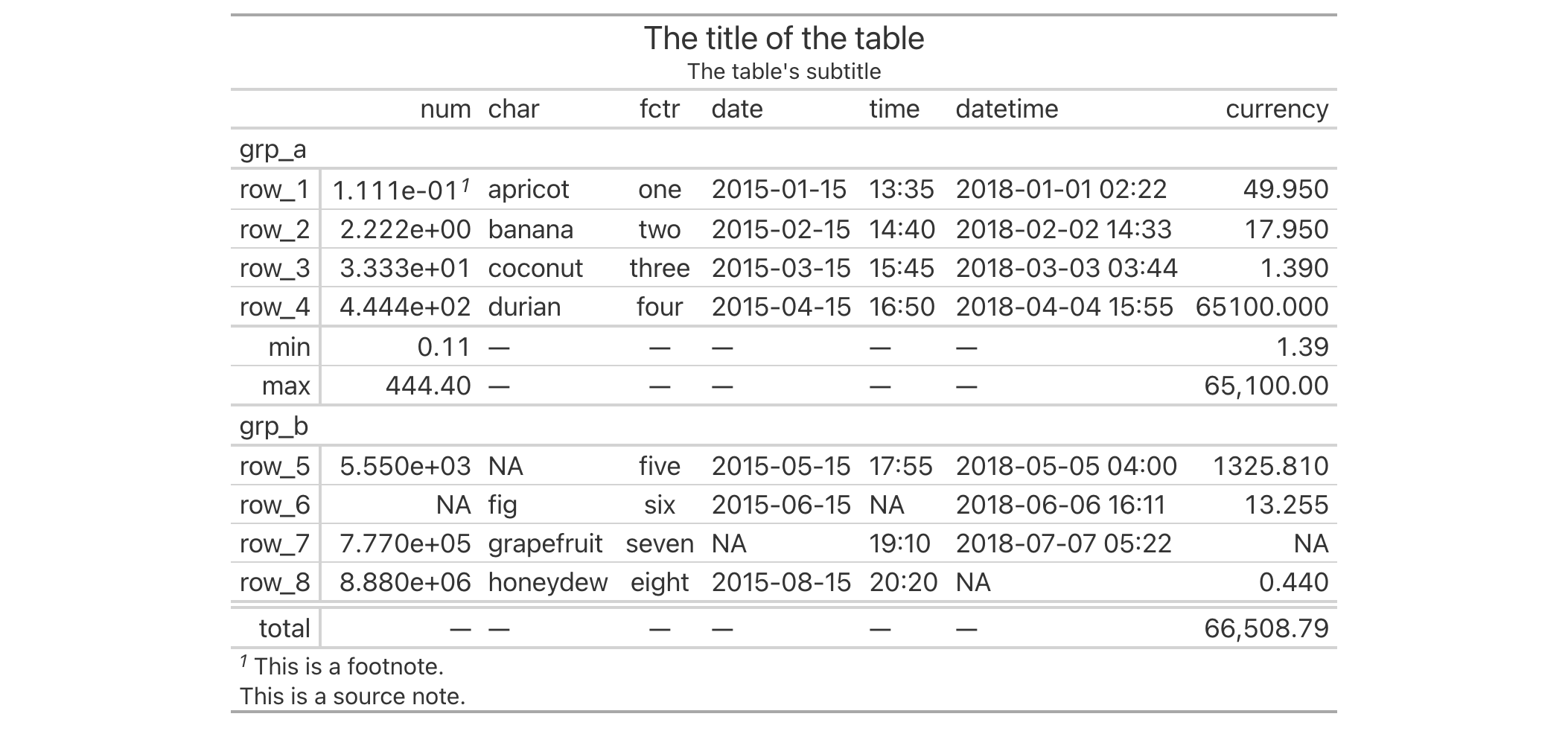Increase or decrease the vertical padding throughout all locations of a
gt table by use of a scale factor, which here is defined by a real
number between 0 and 3. This function serves as a shortcut for setting
the following eight options in tab_options():
heading.paddingcolumn_labels.paddingdata_row.paddingrow_group.paddingsummary_row.paddinggrand_summary_row.paddingfootnotes.paddingsource_notes.padding
Arguments
- data
The gt table data object
obj:<gt_tbl>// requiredThis is the gt table object that is commonly created through use of the
gt()function.- scale
Scale factor
scalar<numeric|integer>(0>=val>=3)// default:1A scale factor by which the vertical padding will be adjusted. Must be a number between
0and3.
Examples
Use the exibble dataset to create a gt table with a number of table
parts added (using functions like summary_rows(), grand_summary_rows(),
and more). Following that, we'll lessen the amount of vertical padding across
the entire table with opt_vertical_padding(). Using a scale value of
0.25 (down from the default of 1) means the vertical space will be
greatly reduced, resulting in a more compact table.
exibble |>
gt(rowname_col = "row", groupname_col = "group") |>
summary_rows(
groups = "grp_a",
columns = c(num, currency),
fns = c("min", "max")
) |>
grand_summary_rows(
columns = currency,
fns = total ~ sum(., na.rm = TRUE)
) |>
tab_source_note(source_note = "This is a source note.") |>
tab_footnote(
footnote = "This is a footnote.",
locations = cells_body(columns = 1, rows = 1)
) |>
tab_header(
title = "The title of the table",
subtitle = "The table's subtitle"
) |>
opt_vertical_padding(scale = 0.25)